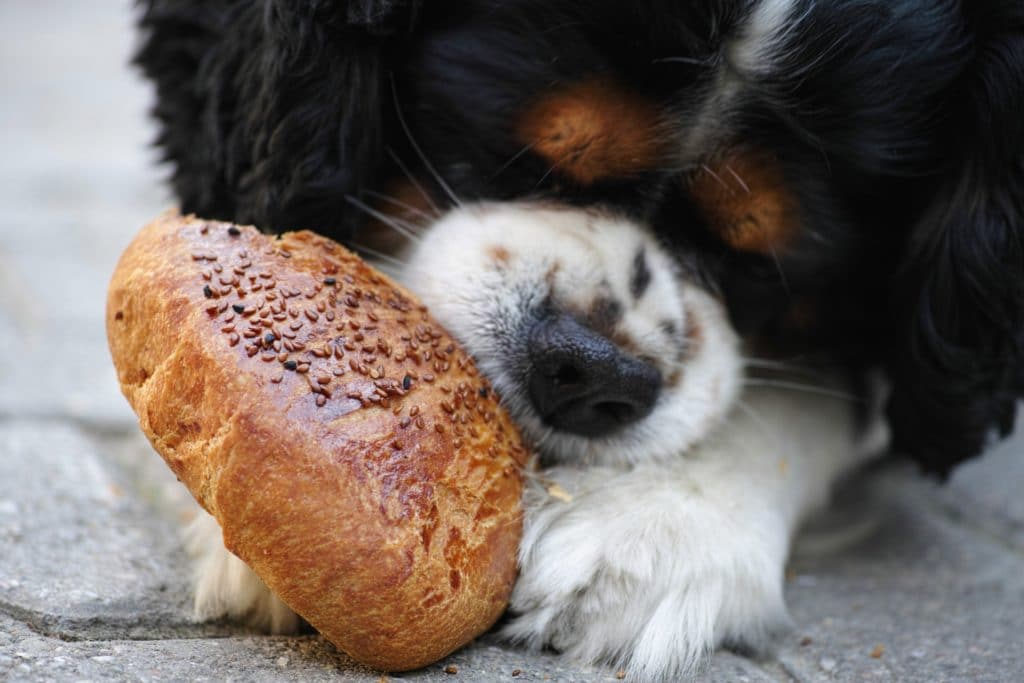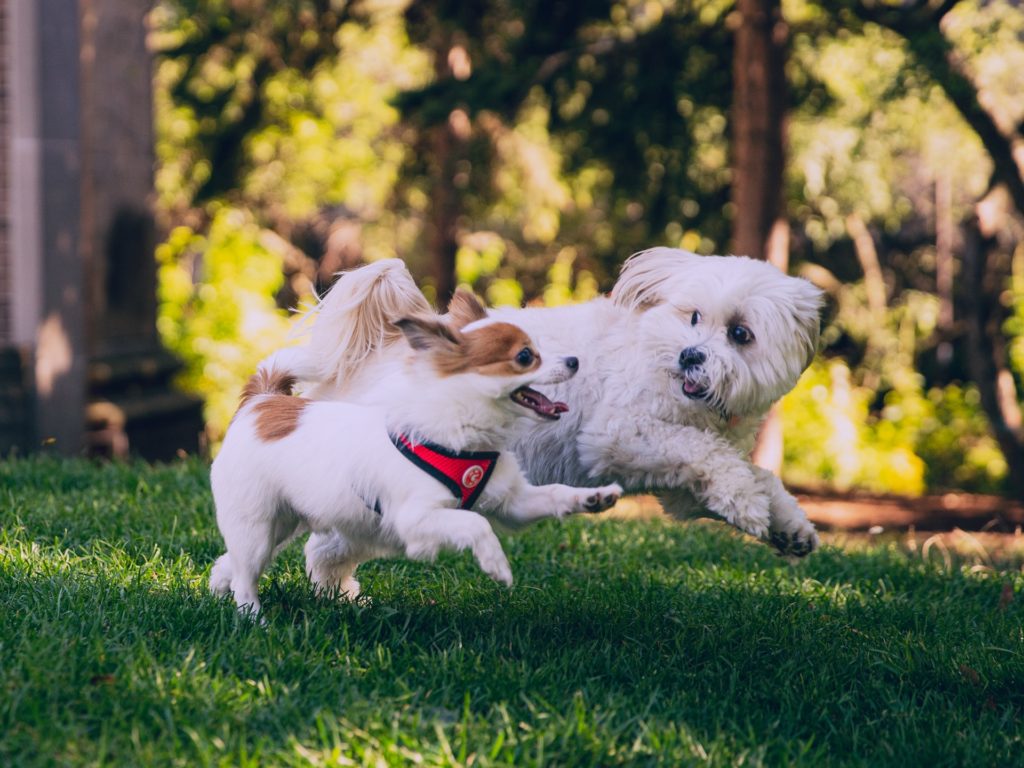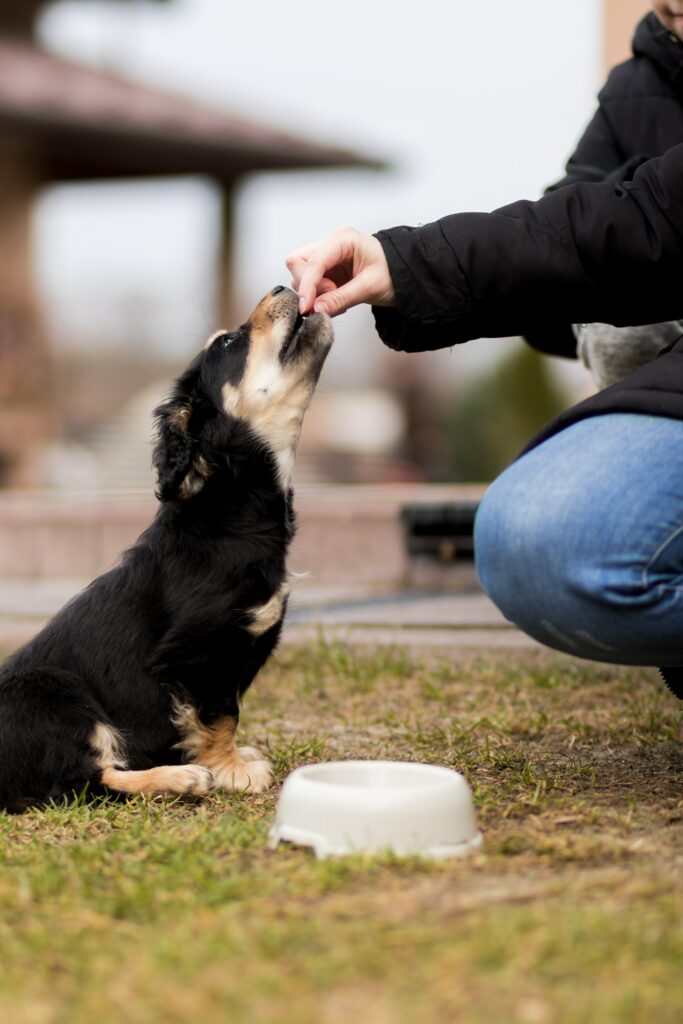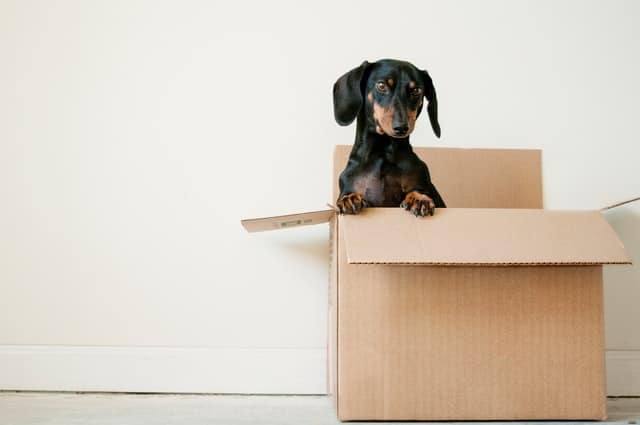To keep your beloved four-legged friend healthy, it is important to feed him in a species-appropriate way. To do this, it is important to know what he can eat and what you should keep away from.
Toxic treats for dogs include:
- Chocolate
- Grapes
- Onions
- Garlic
- Coffee
- Sugar and sweets
- Dairy products
- Salty foods
To make sure you don’t accidentally feed your dog something toxic, we’ll help you and show you lots of alternatives.
But my dog likes the toxic treats so much!
Many foods, household utensils, medicines or plants contain substances that are toxic to dogs. If you are planning to get a dog, you should be aware of which substances can be dangerous for your new companion.
Keep such things locked away or in places the dog cannot reach.
The severity of the symptoms of poisoning will usually depend on how much of the substance the dog ingests and what the substance is. Poisoning may present as fatigue, nausea, diarrhoea or vomiting, severe internal bleeding or convulsions, or it may be fatal.
A quick presentation to your vet will help prevent the worst.
Toxic foods for dogs
Among the foods found in human households, chocolate, grapes, onions, garlic and coffee are particularly toxic to dogs.
Your pet can:
- poisoned by chocolate
- kidney problems from grapes
- get heart problems from caffeine
In chocolate, theobromine is the toxic substance. The content is particularly high in dark chocolate.

But even chocolate-covered gingerbread can be enough to cause poisoning symptoms in dogs. Even chocolate coating is not suitable either, because much more sugar is added here, which is also toxic for your dog.
While grapes or sultanas affect the kidney function in dogs, onions or garlic destroy the red blood cells. Even small amounts are enough. So food leftovers do not belong in the dog’s bowl under any circumstances.
Caffeine causes heart palpitations and kidney problems in dogs. Neurological symptoms also occur in some cases.
Other foods that dogs should not have access to are avocados, cabbage, macadamia nuts and any kind of fruit seeds.
The last point includes dairy products. So every dog loves cheese, you always have some in the house too and when you eat it, that loyal dog bed look hits you right in the heart. Here you have cheese.
But you better rethink your actions! Dogs are not prepared to digest dairy products. Even if your dog doesn’t show any signs of discomfort, it’s better to limit consumption.
Harmful substances in the household
In addition to the foods mentioned above, there are other substances in the home that can be toxic to dogs. These include alcohol, nicotine-containing products, various medicines, cleaning agents, antifreeze, fertilisers and pesticides.
It is best to keep all of these things locked up. Because your dog is very curious and if he likes to stick his nose everywhere, it can happen quickly.
If you have a dog, it is best to avoid using insecticides, slug pellets and rat poison on your own property. Even well-trained dogs can ingest and swallow the poison in an unobserved moment.

Poisonous plants
Certain plants pose another danger to dogs. Whether in the home, garden, meadow or forest, poisonous plants can be found almost everywhere.
You should teach your puppy not to nibble on bushes, leaves or mushrooms. In the flat or house, you should place poisonous plants out of reach of your four-legged friend.
Poisonous houseplants include:
- Poinsettia
- Many species of Ficus
- Orchids
- Chrysanthemums
- Cyclamen
- Lilies
- many other green plants and flowers
In the garden and on walks, you should keep your dog away from ivy, foxglove, cherry laurel, mistletoe, oleander and rhododendron.
Your dog may not even know the poisonous plant and is also an omnivore? If you have tested the recall well, it should be no problem to get your dog away from poisonous plants.
However, the list is by no means complete. There are many other wild plants and herbs that can cause poisoning in dogs.
Poison bait
Besides fertilised fields, pesticides and poisonous plants, another danger lurks on walks. It is becoming increasingly common to find poisoned bait in residential areas, fields and parks.
This can be pieces of sausage or chicken meat or other morsels that are tasty for the dog, laced with rat poison, narcotics or other medicines. Glass shards, needles or razor blades have also been found in such baits.
To keep your dog away from poisonous baits, you should do poison bait training with him. This involves teaching the dog to come to you immediately when given a signal. He should leave everything he has just found, because he has learned that he can expect a particularly fine morsel from you.
At the dog training school, you can get expert guidance on this training so that the training is successful and your timing is right.
Healthy snacks for on the go
If you are out and about with your dog and know that you will be giving a lot of treats for training reasons, you should offer the dog healthy snacks. To keep the dog motivated, the treat must be particularly tasty.

Use something that your dog doesn’t normally get. The usual dry food often does not offer enough incentive.
Many dogs like carrot pieces. If you can’t tempt your dog with beets, dried meat (e.g. chicken strips) is a healthy and low-fat alternative.
You can feed these treats in small quantities:
- Carrots
- Watermelon
- Oatmeal
- Bread (white or wholemeal)
Of course, don’t mix it up, your dog needs to get used to one treat at a time.
You also need to keep a balance between food and exercise. Your dog should not get too fat, as this will cause illness and can lead to expensive vet bills.
Here we have summarized our most popular posts for you in a great overview:
- Is the English Bulldog suitable for beginners?
- Are dogs allowed to eat bananas?
- How much exercise does a Bernese Mountain Dog need?
- When to start jogging with a dog
- Should I buy a puppy or an older dog?
- How long can you leave your dog alone?k
- At what time to feed the dog?
- Avoid boredom with your dog
- Dog doesn’t listen to his name
Conclusion on poisonous everything
In addition to a species-appropriate diet based on your dog’s needs, it is good to take care to avoid toxic foods for dogs.
There are many foods that we humans like to eat often, but which are completely unpalatable to our dogs.
For example, chocolate, coffee or even dairy products are not suitable as treats.
But your dog can also be exposed to toxic substances in everyday life. Whether there are poisonous plants lurking on the road or chemicals in the household that should not be used for playing, if you have trained your dog well, you can already intervene before it is too late.
In addition to meat as a treat, small amounts of selected ingredients, such as vegetables, are allowed in dog food.




